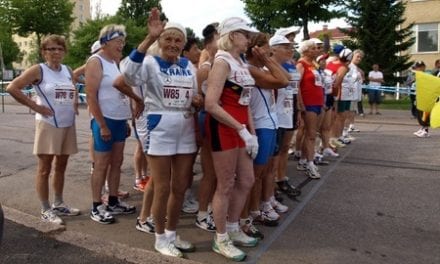Some headline writers saw an opportunity
Laurie Orlov is a friend and publishes the website Age In Place Technology Watch. She sits in an interesting place in the world of seniors and aging. Her views and positions are often more procative than mine and for that she is an important voice in the industry. This article is republished with permission. – Steve Moran
Are ‘drop-in chefs’ an alternative to assisted living?
Some headline writers saw an opportunity – and some ran with the title even though the original NPR story stepped back a bit and said ‘help seniors stay in their own homes.’ You probably have heard that cost-sharing is an alternative to assisted living. Or sharing your home with roommates through Room2Care, with the founder wisely observing “Not everyone needs to be in assisted living.” Or let’s take Granny Pods – are they an alternative to assisted living? Remember these – prefab backyard cottages fit up with computers to provide medication reminders? Or maybe Information Week’s Eight Technologies provide an alternative to assisted living — the article said ‘changing home health care,’ but web designers know SEO and threw in ‘assisted living.’
Remember when seniors feared nursing homes more than death?
That was a study published in 2007 – long ago and far away. Nursing homes are remaking themselves into post-discharge Medicare rehab facilities – and assisted living communities are now the new nursing homes – but with a financial twist. Medicaid can in many instances pay for nursing home care, but assisted living facilities are largely private pay. Residents wait to move in until their mid-80’s, with the typical resident an aged 87-year-old woman paying an average of $51,000/year, more for memory care. According to a variety of sources, upwards of half of residents have some degree of dementia. NCAL notes that 72% of assisted living residents need help with bathing.
Now assisted living is feared more than death
No need for another survey – assisted living is the new nursing home, something to be feared. And the frailty of current residents, anticipated (or feared) long life expectancy, inadequacy of savings to pay for multiple years of assisted living – all combine into a fear-inducing image that rivals I’ve fallen and I can’t get up. That fear makes ‘alternative to assisted living’ a search engine necessity for those looking and feeling a rising sense of financial fear – see cheaper alternatives or home care as an alternative to assisted living.
What is the viable alternative to assisted living?
Home care for 20 hours per week leaves a frail individual alone in front of a television for hours at a time. Live in home-care can cost the same as assisted living – the care recipient remains at home, but sees very few people. Assisted living (whether for 6 people, 60 or 160) provides apartment cleaning, assistance with bathing, dressing, toileting, eating and laundry. Larger communities provide activities 7 days per week – and a social framework. They provide redirection to confused and lost residents, and they do what they can to prevent dangerous wandering. There have been numerous and well-publicized problems with assisted living. But elderly people can have a good experience there – and the marketers of assisted living communities are missing the SEO opportunity to counter the messages about finding ‘alternatives.’
Laurie








